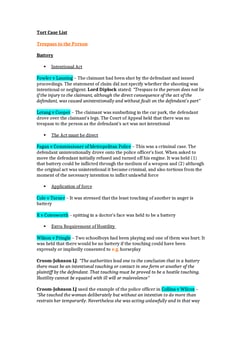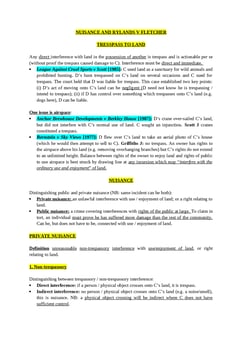Knightley v Johns [1982] 1 All ER 851
Judgement for the case Knightley v Johns
Table Of Contents
KEY POINTS
Negligence involves "remoteness of damage," meaning defendants are responsible for reasonably foreseeable harm resulting from their negligence.
“Novus Actus Interveniens” is a latin phrase indicating a third-party action that breaks the chain of causation between the defendant's negligence and the plaintiff's injuries.
A third party's negligence occurs between defendant's wrongdoing and plaintiff's injuries, it questions if the act breaks the causation chain.
Test for “Novus Actus Interveniens” assesses if the intervening event was reasonably foreseeable due to defendant's negligence.
Damages in negligence cases follow the principle of "remoteness," compensating only for reasonably foreseeable losses.
Foreseeability determines liability extent; harm must be a natural and probable consequence of defendant's negligence.
FACTS
The first defendant was in a serious road accident near a one-way tunnel with a sharp bend. The police inspector should have closed the tunnel to oncoming traffic. He ordered two officers, including the plaintiff, to close it. The officer rode against traffic, and the plaintiff collided with an oncoming car, getting injured. The car driver was not at fault.
The plaintiff sued for damages, holding the first defendant, inspector, and chief constable liable.
The first defendant admitted negligence but argued others were also at fault. The trial judge cleared the plaintiff and inspector of negligence, deeming their actions part of the accident chain. The first defendant appealed.
The appeal found the plaintiff's actions added risk but weren't negligent. The inspector's negligence and its impact are under review.
JUDGEMENT
The inspector was negligent in not closing the tunnel before he gave orders for that to be done and also in ordering or allowing his subordinates, including the plaintiff, to carry out the dangerous maneuver of riding back along the tunnel contrary to the standing orders for road accidents in the tunnel
COMMENTARY
Riding in traffic, the plaintiff collided with a vehicle, getting injured. The plaintiff sued for damages, alleging negligence by the first defendant, inspector, and chief constable. The trial found no negligence by the plaintiff or inspector, maintaining the causal link from the initial accident. The first defendant appealed, arguing plaintiff's actions and the inspector's negligence caused the accident. The appeal assessed if a new action broke the causal chain.
The key was whether the damage was foreseeable and probable, not a mere possibility. If the events were likely outcomes of negligence, they weren't considered new actions.
ORIGINAL ANALYSIS
A negligent motorist caused an accident in a tunnel, which led to the officer on the scene negligently directing a police constable to cycle against the traffic to close off the entrance.
When the constable was injured he sued the original motorist and the officer.
CA dismissed his claim in respect of the motorist but allowed it regarding the officer.
The test for remoteness is whether the “damage was natural and probable and therefore reasonably foreseeable, in the sense that something similar to what happened was likely to happen”.
The original accident did not fulfil this criteria, whereas the officer’s command did.
For Further Study on Knightley v Johns
Need instant answers? Our AI exam tutor is here to help.
Ask questions 🙋 Get answers 📔 It's simple 👁️👄👁️
Our AI is educated by the highest scoring students across all subjects and schools. Join hundreds of your peers today.
Get StartedSimilar Cases
Related Product Samples
These product samples contain the same concepts we cover in this case.
| GDL Tort Law | Remoteness Notes (5 pages) |


 Since 2010, Oxbridge Notes has been a trusted education marketplace, supplying high-quality materials from top achievers at universities like Oxford, Cambridge, LSE, Harvard, and Yale.
Since 2010, Oxbridge Notes has been a trusted education marketplace, supplying high-quality materials from top achievers at universities like Oxford, Cambridge, LSE, Harvard, and Yale.